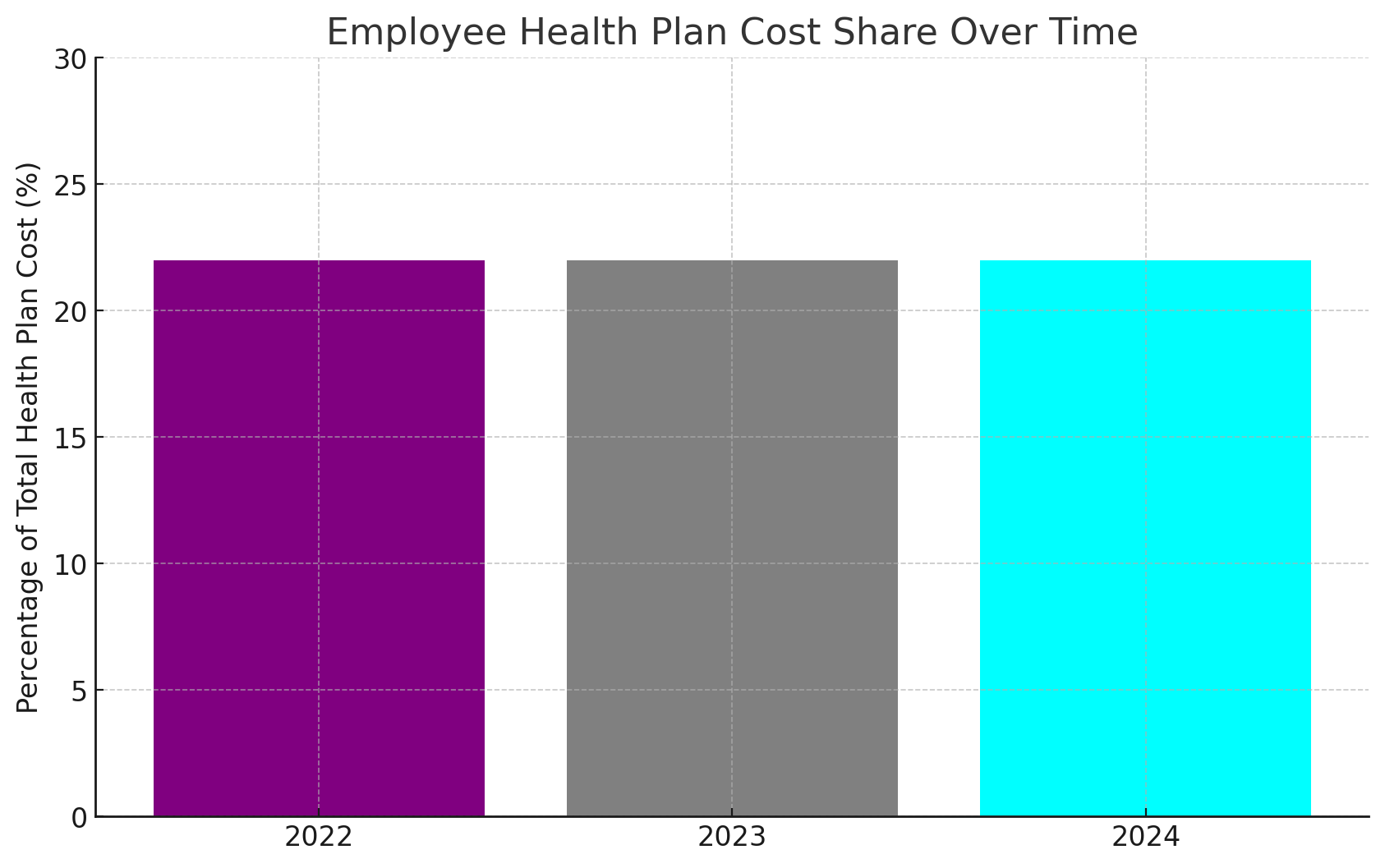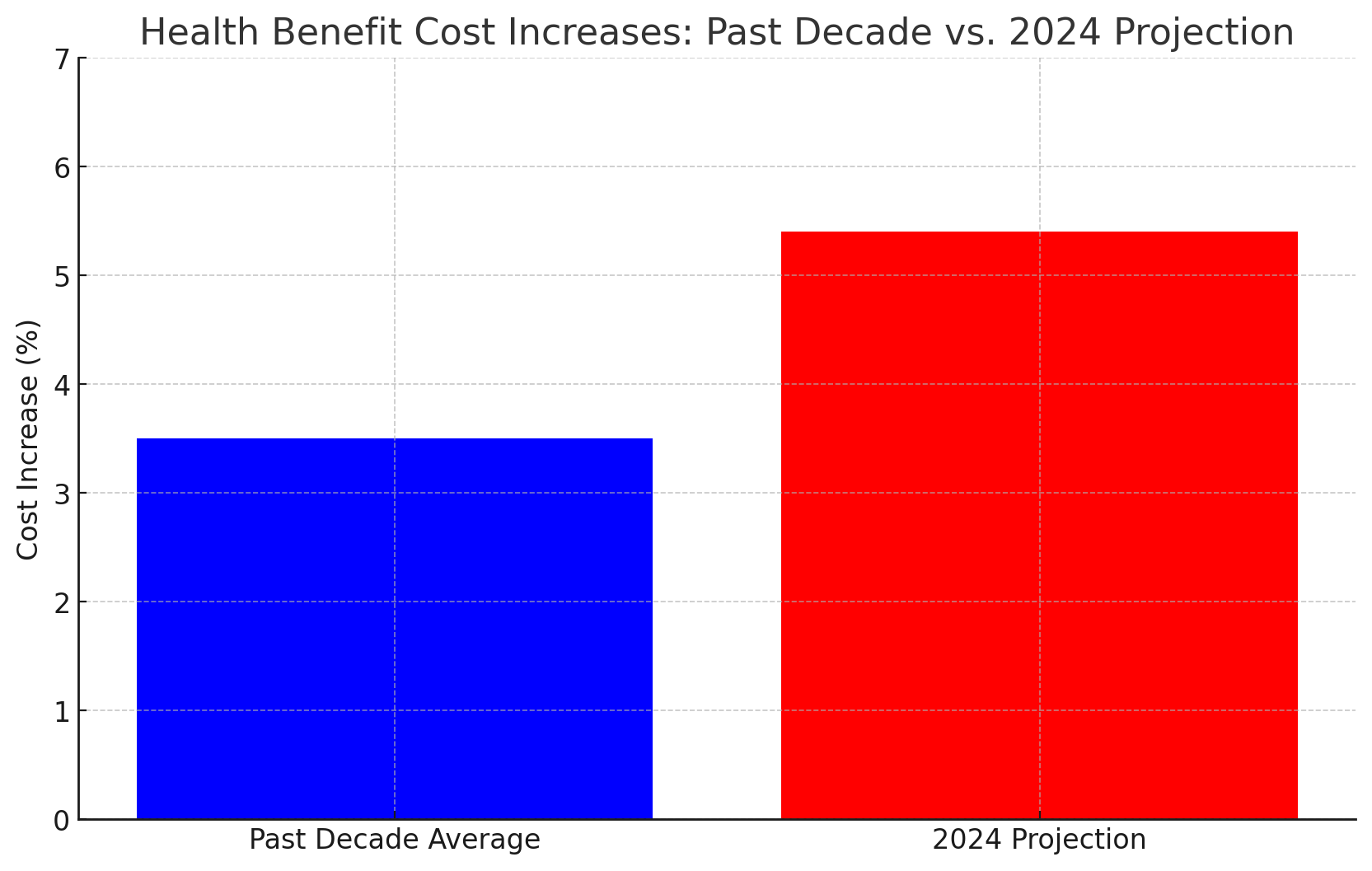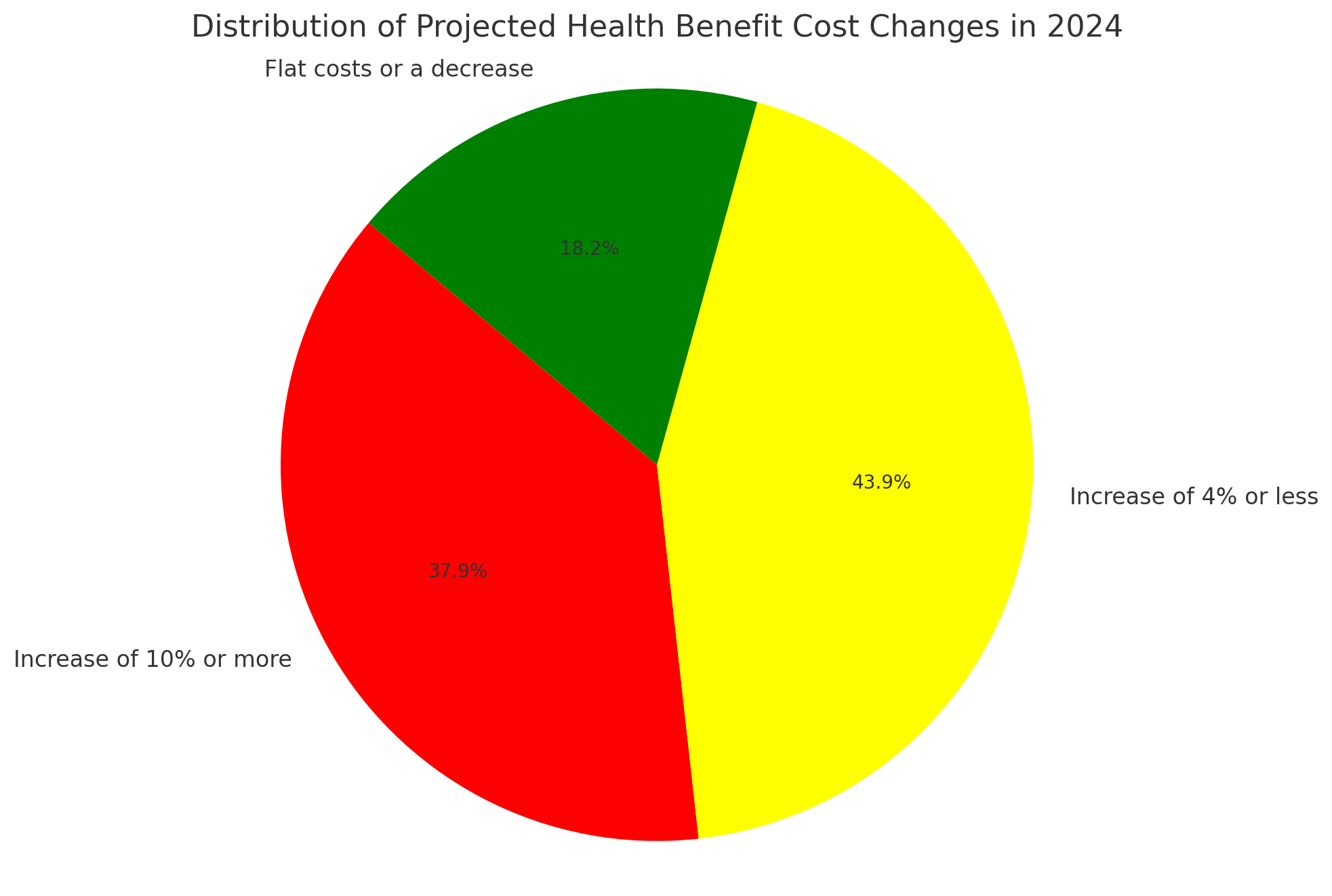The insurance industry is on the cusp of a major transformation as we head into 2024. With emerging trends and technologies disrupting traditional business models, it’s important for insurance companies to stay updated on the key developments that will likely shape their future. This overview provides an overview of the most impactful insurance trends in 2024 and why they matter.
Overview of Emerging Trends in the Insurance Industry for 2024
The insurance sector is experiencing rapid digitalization and adoption of artificial intelligence (AI) alongside shifts in customer expectations, climate impacts, and talent priorities. Key trends include:
- Accelerating the use of data analytics, IoT, and automation to improve underwriting, pricing, and claims processes.
- Growth of embedded and parametric insurance products in response to changing customer needs.
- Increasing prominence of climate risks and demand for expanded climate offerings.
- Focus on elevating customer experience through digital engagement and personalization.
- Changes in workforce composition as insurers seek to reskill for digital capabilities and recruit technology and data talent.
- Rising regulatory scrutiny, especially around climate and ESG (sustainability) reporting.
- Potential uptick in mergers & acquisitions (M&A) and insurtech partnerships as the market evolves.
Key Takeaways
- Digital transformation through data analytics, AI, and customer experience optimization is essential for insurance companies to remain competitive.
- New risk protection models like embedded insurance and parametric cover are emerging in response to changing consumer and business behaviors.
- Climate change necessitates expanded risk offerings and integration of climate factors in insurer operations and investment decisions.
- Customer-centricity powered by digital self-service capabilities and hyper-personalization is now a requirement, not a luxury.
- Workforce strategies must reskill current employees on new skills while attracting specialized talent in technology and analytics.
- Increased regulations around climate, sustainability, data privacy, and reporting demand proactive compliance efforts.
- Consolidation and insurtech partnerships will likely increase as incumbent insurers seek scale advantages and digital expertise.
- Focusing on risk prevention and resilience can differentiate insurers as providing holistic protection beyond just claims payouts.
- Adaptability and innovation will enable insurers to capitalize on emerging trends and maintain relevance in a dynamic risk landscape.

Importance of Staying Updated on Latest Insurance Trends
Being aware of the latest developments in the insurance industry for 2024 is crucial for several reasons:
- It allows insurers to identify growth opportunities and evolve their business models accordingly through new products, services, or collaborations.
- Understanding shifting customer expectations and market trends helps insurers improve customer experiences to boost retention and acquisition.
- Anticipating increased regulations and reporting requirements early gives insurers more time to enhance compliance processes proactively.
- Knowledge of technology and talent trends enables insurers to upskill employees, recruit strategically, and leverage innovations to their advantage.
- Tracking competitive moves and disruptions in the sector provides actionable insight into where insurers should direct investment and innovation spend.
Being agile and adaptable in light of emerging trends will be key for insurance companies looking to remain relevant, compliant, and competitively positioned in 2024 and beyond. This overview summarizes the most impactful developments to help insurers capitalize on these industry evolution opportunities.
Digital Transformation Trends
Digitalization is radically changing how insurance companies operate, engage customers, and develop products. Embracing new technologies will be key for insurers looking to transform their legacy business models in 2024.
Increasing technology adoption (digital, data, artificial intelligence, automation)
The insurance industry is ramping up the adoption of digital capabilities including:
- Data analytics and predictive modeling to improve risk assessment, pricing accuracy, and claims processing efficiency. Leading insurers are investing in big data platforms and advanced analytics talent.
- Artificial intelligence (AI) for use cases like automated underwriting, personalized recommendations, and claims fraud detection. AI can analyze large volumes of data to uncover insights much faster than humans.
- Automation of repetitive back-office processes through robotic process automation and AI virtual agents. This frees employees to focus on higher-value activities.
- Internet of Things (IoT) connected devices and sensors to enable usage-based insurance products and real-time risk monitoring. Real-time data enhances insurers’ risk profiles.
Digital Ecosystems and Partnerships
Insurers are increasingly participating in digital ecosystems with technology firms and industry partners to expand capabilities. Key examples:
- Embedded insurance integrated into non-insurance purchases through retailers and product providers.
- Insurtech partnerships to accelerate innovation in areas like digital distribution and analytics.
- Industry consortiums to jointly develop blockchain, AI, and other emerging technology use cases.
Collaborative ecosystems allow insurers to quickly gain new digital competencies that would take years to build independently.
Enhanced Data Analytics and Generative AI
- Generative AI like ChatGPT can generate content and process information at scale, augmenting human capabilities. Insurers are piloting uses like automated report writing.
- Advanced analytics powered by more data sources provides a holistic, real-time view of risks to improve decision-making accuracy. Expanding data access is key.
- Intelligent process automation combines rules-based robotic process automation with AI tools like machine learning and natural language processing to further enhance the efficiency of routine processes.
The exponential growth of structured and unstructured data, paired with maturing AI capabilities, enables insurers to derive actionable insights faster than ever before.

Evolving Insurance Business Models
The insurance sector is adapting to changing consumer behaviors and risk landscapes by expanding into new products, services, and distribution models.
Embedded Insurance and Parametric Insurance Growth
Embedded insurance integrated into non-insurance purchases is disrupting distribution while growing the overall market. Benefits include:
- Increased access and affordability of coverage.
- Streamlined purchasing integrated into everyday transactions.
- Expanded real-time data for more accurate underwriting.
Parametric insurance pays claims automatically based on a triggering event without need for loss adjustment. It provides faster payouts and is gaining traction for catastrophe risks.
Usage-based and On-demand Insurance
Insurers are catering to the on-demand economy and appetite for personalization with innovative offerings like:
- Pay-per-mile auto insurance based on driving data from telematics and IoT devices.
- On-demand coverage for specific items or time periods via mobile apps.
- Peer-to-peer models enabling groups to pool and share risk.
- Microinsurance with affordable premiums and scaled-down coverage targeted at underserved segments.
Cyber Insurance and Intangible Asset Coverage
New products are emerging to address evolving risks like:
- Cyber insurance protecting against data breaches, hacking, ransomware, and other cyber crimes.
- Intangible asset coverage for risks tied to intellectual property, brand reputation, and other intangibles.
- ESG insurance to cover liability risks related to environmental, social or governance issues.
Insurers are tailoring offerings to manage new risks tied to technology, digital assets, and stakeholder pressures.
Climate Change Impact
Climate change is significantly influencing the insurance industry’s risk exposure, products, and operations. Insurers are responding with expanded offerings and integration of climate factors.
Increasing Climate-related Risks and Losses
- Property and casualty losses from extreme weather perils like floods, wildfires, and hurricanes are escalating in frequency and severity due to climate change.
- Inflation exacerbates claims costs and premiums for climate-vulnerable regions, spurring insurer pullback.
- Climate litigation alleging greenwashing or liability for contributing to climate change poses financial and reputational risks.
Expanding Climate-specific Products
To help clients manage climate risks, insurers are enhancing offerings such as:
- Parametric and index-based catastrophe covers paying out based on specific trigger events.
- Weather derivatives protecting against financial impacts of temperatures or rainfall deviating from norms.
- Policies for renewable energy projects, carbon offsets, and other sustainability efforts.
- ESG liability insurance covering risks tied to environmental or climate controversies.
Pressure to Integrate ESG Factors
- Investors and regulators demand insurers measure and disclose their climate impacts, exposures, and strategies.
- Insurers face scrutiny to align underwriting and investment decisions with climate goals, such as by restricting fossil fuel coverage.
- However, aggressively limiting underwriting could reduce market choice and affordability of insurance coverage when it is needed most.
- Clear climate risk management frameworks and transition plans are becoming required table stakes.
Climate change necessitates a delicate balancing act for insurers – meeting societal pressure to enable climate action while sustaining competitive, affordable insurance markets.

Changing Customer Expectations
Customer preferences and behaviors are evolving rapidly, forcing insurers to rethink their engagement strategies and product development approaches to align with emerging needs and desires.
Desire for Self-service and Convenience
Today’s on-the-go customers expect instant, seamless interactions with their insurers across web, mobile, and social channels. Self-service portals for tasks like managing policies, making payments, and submitting claims are becoming necessities rather than nice-to-haves. Insurance offerings tailored for digital lifestyles, like usage-based and on-demand coverage, are gaining traction as well.
Insurers who don’t provide always-on, omnichannel access with intuitive experiences risk losing out to competitors who do. Offering personalized engagement powered by data analytics and digital capabilities will be a key differentiator.
Cost of Living Stresses on Insurance Affordability
The current economic climate of high inflation and recession fears may lead some policyholders to reduce insurance coverage or let policies lapse in an effort to cut household expenses. This presents a multifaceted challenge for insurers.
On one hand, insurers need to clearly communicate the value proposition of their products to dissuade customers from dropping them. They may need to proactively suggest tailored solutions like higher deductibles, limited coverage options, or premium financing arrangements to ease affordability concerns. Additionally, flexible, bite-sized insurance products like microinsurance could enable broader access to protection despite cost pressures.
Focus on Loyalty and Retention
Today’s consumers have endless insurance options at their fingertips and low switching costs. A poor customer experience can rapidly erode trust while seamless, personalized service strengthens advocacy and loyalty.
Omnichannel, personalized engagement will be crucial for retention and growth. Integration into customers’ digital lifestyles, such as through wearables data and contextual recommendations, can make the insurer relationship more tangible and differentiated.
Customer allegiance will go to those insurers offering hyper-relevant products and operating as always-on, digital-first businesses. Legacy carriers in particular must digitally transform to compete amid changing consumer expectations.
Workforce and Talent Trends
As insurance companies accelerate their digital transformations, their talent strategies are also evolving to access specialized skills, reskill employees, and promote more inclusive workplaces.
Reskilling Employees for Digital Capabilities
Digital fluency and comfort in using data to drive decisions are quickly becoming required core competencies for all roles in insurance, not just technical positions. Insurers are actively upskilling their current staff on technologies like automation, advanced analytics, and AI through internal training programs and external partnerships. Cultivating digitally-savvy talent across the organization enables insurers to maximize return on investment from their new technology implementations.
However, reskilling at scale presents challenges. Employees may resist changes or lack aptitude for new skills. Extensive training also keeps staff from day-to-day productivity in the short term. Further, external partners often provide point solutions rather than comprehensive workforce development. Insurers must take a strategic, patient approach to change management and upskilling.
Recruiting Tech and Data Talent
Given the scarce supply of digital skills like data science, engineering, and user experience design, competitive hiring of outside tech talent is a pressing need for insurance companies. Insurers are evolving their employer branding to position as progressive, tech-forward yet mission-driven firms in order to attract digital native employees and professionals.
Partnerships with InsurTech startups also provide access to specialized experts that incumbents may lack while presenting acquisition opportunities. However, even big insurers struggle to match compensation offered by Big Tech firms also vying for tech talent. Creative workforce models like contractors, gig workers, and crowdsourcing should be explored to complement permanent hires.
Promoting Diversity, Equity and Inclusion
Lack of diversity, especially in executive and board roles, persists as an issue in insurance. For example, just 3% of insurance CEOs globally are female. Fostering inclusive work cultures positively impacts talent retention, innovation, customer alignment, and financial performance.
Goals for representation, anti-bias training, leadership accountability for DEI results, employee resource groups, and mentoring programs are some key initiatives insurers are undertaking. But meaningful advancement requires going beyond PR-friendly announcements to challenge the organizational status quo. Tying DEI metrics to compensation can provide additional motivation.
Progressive human capital strategies that align to insurers’ digital visions, with reskilling, external hiring, and diversity advances working in tandem, will differentiate leading carriers.
Increased Regulations
Insurance companies are facing expanded regulatory scrutiny and reporting requirements, especially surrounding climate change, ESG, and data privacy factors.
New accounting rules like IFRS 17 significantly alter the way insurers must measure and disclose their finances and performance. Regulators are also demanding more detailed disclosures from insurers around climate modeling, risk exposure assessments, and progress toward emissions reduction goals. More stringent regulations continue to be enacted around investment strategies, solvency and capital requirements, sales practices, and other areas.
In addition, investors, regulators, and consumers are calling for increased transparency from insurers on their societal and climate impacts. Mandatory climate risk disclosures are ramping up in markets like the United Kingdom, European Union, Australia, and Canada. Other regions will likely follow suit. Insurers face growing pressure to integrate environmental, social, and governance factors into underwriting decisions. However, they must balance stakeholder demands to restrict coverage for emissions-intensive sectors with maintaining free market access to insurance.
Furthermore, more robust personal data protection laws like GDPR in the European Union and CCPA in California require insurers to re-architect their data practices with privacy by-design principles in mind. Cybersecurity vulnerabilities, ethical use of AI, and algorithmic bias are other regulatory focus areas that demand insurers implement strong controls and oversight. Regulator penalties for non-compliance are steadily increasing, posing financial and reputational risks.
While greater oversight is often well-intentioned, compliance costs do squeeze insurer profit margins. Proactive collaboration between regulators and industry groups can help define pragmatic new regulations that meet policy goals without overburdening insurers. Overall, insurers should take a proactive approach to addressing evolving regulatory expectations, rather than resist calls for increased transparency.
Mergers, Acquisitions and Startups
Merger and acquisition activity in the insurance sector dipped in 2022 after hitting decade highs the prior year. However, deal volume is expected to potentially rebound as macroeconomic conditions improve. Insurance technology startups remain an acquisition target for incumbents seeking digital capabilities.
Potential Uptick in Insurance M&A
Insurance M&A deal value and volume surged in 2021 but dropped in 2022 amid economic uncertainty, rising interest rates, and reduced valuation multiples. However, demand for transactions remains high. As inflation and rates ease in 2023-2024, analysts predict pent-up deal activity will drive an uptick in mergers and acquisitions. Regional expansion, consolidation for efficiency gains, and spin-offs of non-core business units will underpin deal rationales.
Insurers may also pursue acquisitions to reposition portfolios in response to climate change impacts on certain market segments and geographies. Achieving scale quickly through M&A can aid with the spreading of fixed operating costs.
Rise of Insurtechs and Embedded Insurance
Insurtech funding hit all-time highs in 2021, but declined in 2022 reflecting overall tech sector cooldowns. Regardless, insurtechs continue driving innovation across analytics, digital distribution, cloud-based processing, and data-driven business models. Their solutions are powering the rise of embedded insurance integrated into non-insurance purchases.
While insurtechs face pressures from tightening investment, their innovations remain appealing acquisition targets for incumbents seeking faster digital transformation.
Tech Talent Acquisition by Incumbents
Legacy insurance companies are heavily partnering and acquiring insurtechs for their technical expertise, entrepreneurial cultures, and ready-to-deploy digital solutions. Valuations have dropped from frothy highs, but demand remains robust for insurtechs’ system modernization capabilities and skill sets.
Acquiring this digital DNA can help accelerate incumbents’ modernization efforts to improve customer experience, a key imperative in a competitive market. However, effectively integrating acquired tech talent presents challenges insurers must address.
Market Opportunities and Outlook
While near-term profitability challenges persist, the overall insurance industry outlook remains optimistic. Ongoing innovation and digital transformation efforts are unlocking new sources of value creation and growth potential across business lines.
Growth Potential Across Segments
In personal lines, increasing risk awareness and inflation concerns are prompting first-time customers as well as additional policies from existing clients. Commercial lines insurers see opportunities in covering intangible assets like intellectual property and non-physical losses such as supply chain disruptions. The health insurance segment benefits from aging global populations and advancements in care delivery, while shifting wealth demographics support expanded retirement solutions and longevity risk coverage.
Usage-based, on-demand, and embedded insurance models are attracting younger, digital-focused consumers. New data sources and analytical capabilities allow for development of hyper-customized policies and proactive risk protection partnerships beyond basic indemnification.
Profitability Challenges but Optimism
Elevated catastrophe losses, social inflation litigation trends, global supply chain vulnerabilities, and other factors present profitability challenges in the short term. However, pricing adjustments, improved risk selection through better data, reduced frictional costs via automation, and higher investment income with rising interest rates should help restore stronger underwriting margins over the next 24-36 months.
Ongoing adoption of advanced data analytics and artificial intelligence can enhance underwriting accuracy and operational efficiency over time as well. Insurers are also collaborating more with industry partners to make insured assets and systems more risk-resilient.
Focus on Risk Prevention over Claims Payments
Insurers are increasingly focused on helping policyholders avoid or mitigate loss events altogether, rather than merely financially compensating them after the fact. Offerings are expanding to encompass proactive risk management, such as cybersecurity services and IoT-based equipment monitoring. Holistic risk prevention partnerships can differentiate carriers as providing added value beyond traditional indemnity models.
With adaptation, innovation, and collaboration, the insurance industry can overcome present profit challenges to capitalize on emerging growth opportunities. The long-term outlook remains positive.
Final Thoughts
The insurance industry outlook for 2024 and beyond is one of immense opportunity. However, seizing the potential of emerging trends and technologies requires vision, focus, and commitment to change.
At Branco Insurance Group, our team stays on the cutting edge of insurance innovations so that we can best advise our clients. We want to help you successfully navigate the exciting changes ahead.
With digital engagement more crucial than ever, we’ve invested in advanced analytics capabilities to deliver personalized experiences. This allows us to tailor recommendations and policies to suit your unique risk profile and needs. We utilize the latest tools while never losing sight of the human touch.
As risks evolve, so do our offerings, from coverage for new sharing economy liabilities to parametric solutions that pay claims seamlessly. Our consultants will help identify potential gaps and craft comprehensive protection. We aim to give you peace of mind now and in the future.
We focus on building risk resilience and prevention. Our expertise goes beyond financial compensation to provide actionable insights that empower smart risk management decisions. Let us be your trusted partner in total risk health.
At Branco Insurance Group, our mission is to guide clients toward a safer, more stable future using the transformative solutions shaping our industry.
We invite you to schedule a consultation with one of our experts to discuss what trends could mean for your insurance needs. Learn how we can collaborate to improve your risk footing and unlock new opportunities.
The future of insurance is bright. Together, let’s ensure you are ideally positioned to benefit. Contact us today to get started.








